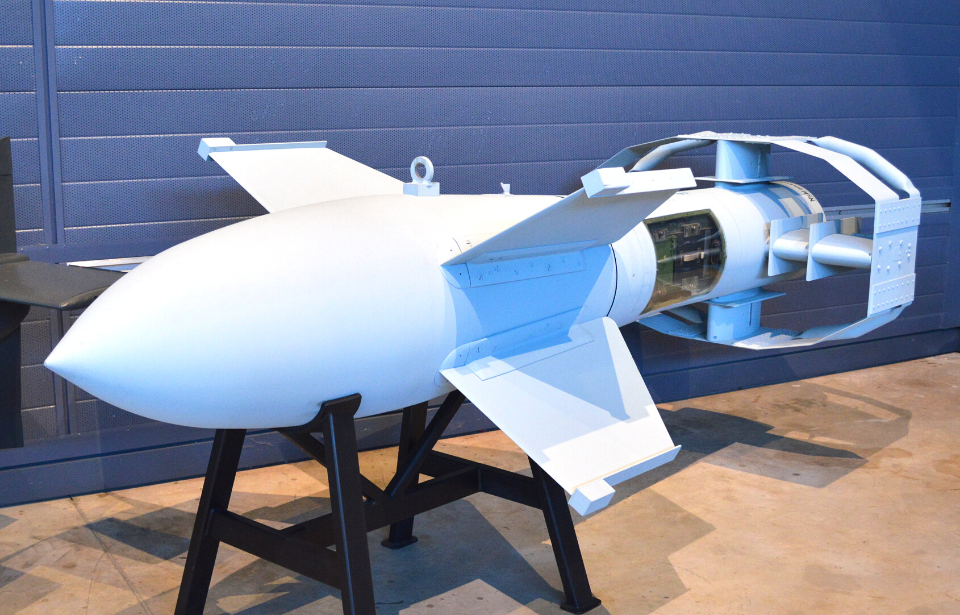The Fritz X, known by various names – Ruhrstahl SD 1400 X, PC 1400X, Kramer X-1, and FX 1400 – was a German radio-guided anti-ship missile. It incorporated technology from a previous armor-piercing device, incorporating enhancements that greatly improved its efficiency and precision. These led to significant success during its initial deployments. Despite these advancements, however, the Fritz X had several limitations that rendered it ineffective against Allied aircraft.
Modified PC 1400
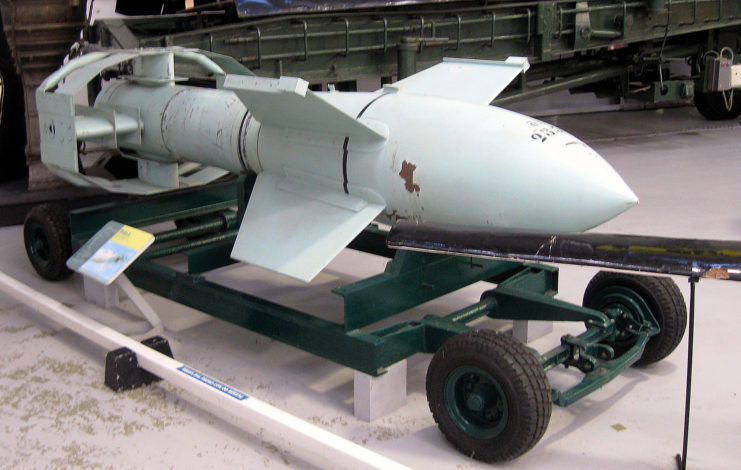
Designed by Max Kramer and manufactured by Ruhrstahl AG, the Fritz X was developed from the PC 1400 (1,400 kg) bomb. It weighed 3,450 pounds and carried a 710-pound warhead, which could penetrate up to 28 inches of armor when dropped at an altitude of between 18,000 and 20,000 feet.
In 1940, several versions were developed to determine the best design. The X-2 was capable of higher speeds and was supposed to be fitted with an infrared homing device, but the system was abandoned and only one was built. The X-3 was both heavier and larger, and could travel at speeds of up to 900 MPH. However, the X-1 was determined to be the best option, as it was simpler to operate and develop.
By 1941, testing of the missile was conducted by the Luftwaffe, and, in 1943, was moved to the manufacturing stage.
Fritz X specs
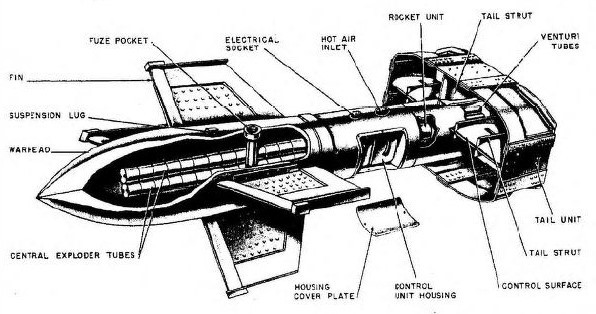
The Fritz X was more aerodynamic and used the Kehl-Strasbourg joystick radio-command system. It had an enlarged tail with a 12-sided framework surrounding four streamlined fins. The two longer ones were fitted with spoilers, and two gyros stabilized the explosive. In an asymmetrical cruciform shape, a pair of wings was mounted at the front.
The missiles were deployed from Dornier Do 217K-2 and Heinkel He 177A Greif aircraft, and bombardiers used their tail flares to guide them upon release. The spoilers were radio-controlled and allowed the Fritz X to move as instructed. As such, they could be extremely accurate when not subject to radio-jamming by the Allies.
Success in the Mediterranean Theater
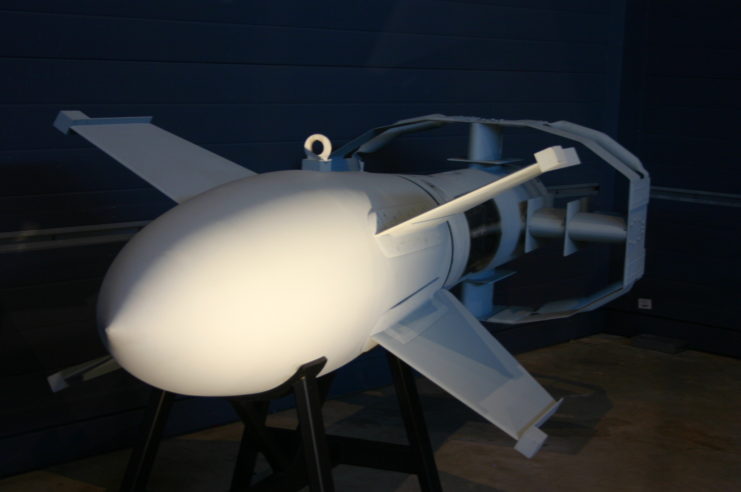
The Fritz X first saw use on July 21, 1943 in a raid on Sicily’s Port of Augusta . At the time, there were no confirmed hits and the Allies remained largely unaware that the Germans were operating radio-guided missiles. However, the Fritz X soon saw its most notable success in an attack on the Italian fleet in September 1943.
Following Benito Mussolini‘s arrest, the Italian government entered into negotiations with the Allies, and, on September 8, the Supreme Allied Command in Europe announced an armistice had been signed. A plan was then made to defect the Italian naval fleet to Allied ports in Tunisia and Malta. It didn’t take long, however, for the Germans to catch on and plan their own attack on the voyage to prevent the ships from reaching their destinations.
Sinking of Roma (1940)
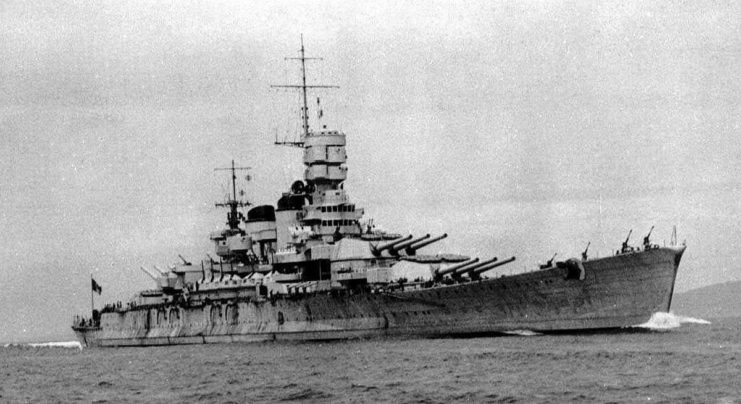
A squadron consisting of three battleships – Roma (1940), Vittorio Veneto and Italia (1943) – accompanied by six cruisers and eight destroyers, navigated the western coastline of Corsica, making their way toward Sardinia and Tunisia. At midday, six Do 217K-2 aircraft from Gruppe III of Kampfgeschwader 100 Wiking approached the fleet, each carrying a single Fritz X missile.
The most significant success was the sinking of the Italian flagship Roma. A Fritz X missile pierced the battleship’s starboard side, detonating beneath her keel. The resulting explosion inflicted severe damage, flooding Roma‘s boiler and engine rooms while disabling two of her four propeller shafts. This reduction in speed and a series of electrical fires further compounded the crisis.
Merely seven minutes later, another Fritz X found its mark on Roma, this time exploding in her forward engine room and causing a catastrophic magazine detonation. The intensity of the blast claimed the lives of Vice Adm. Carlo Bergamini, the ship’s captain, and 1,393 crew members. Within 30 minutes of the initial strike, Roma split in two and capsized.
In the days following these events, Luftwaffe pilots continued to employ Fritz X missiles, sinking the British cruiser HMS Spartan (95) and destroyer Janus (F53), along with several merchant vessels in the vicinity. They also inflicted substantial damage on the British warship HMS Warspite (03) and cruiser Uganda (66), as well as the American light cruisers USS Philadelphia (CL-41) and Savannah (CL-42).
The Fritz X made German aircraft vulnerable
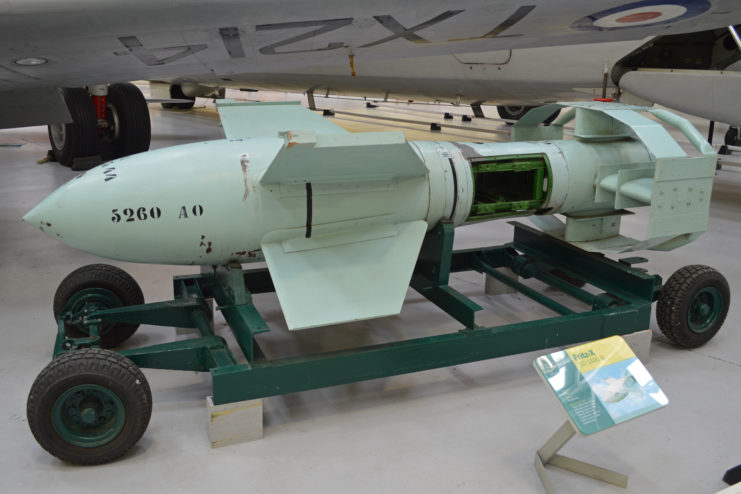
Although the Fritz X showed promise in the early days, it certainly had its drawbacks. For starters, the bomber aircraft had to fly straight and level while the missile was onboard. Secondly, they had to decelerate immediately following the bombs’ release, as the bombardiers needed a visual to guide them.
Aircraft carrying and deploying the Fritz X soon realized how vulnerable they’d become – and it didn’t take long for the Allies to identify and exploit this.
The most effective defense against Fritz X-carrying German aircraft were fighters, preventing them from flying slow and straight. Additionally, the Allies determined that creating smoke was also effective, as the missiles were less visible and, therefore, caused the bombardiers issues when it came to guiding them. The Allies also quickly set up electronic countermeasures to jam the radio-signals, causing further problems.
More from us: The German V-1 ‘Buzz Bomb’ Was Developed to Terrorize the British Public
The plan initially called for the production of 750 Fritz X missiles per month, but between April 1943 and the end of the program in December the following year, only 1,386 had been produced. Of these, 602 were used in training and testing. On top of that, the missiles weren’t as accurate as the Luftwaffe had hoped, only hitting their targets around 20 percent of the time.
That being said, the Fritz X was the starting point for future spoiler-controlled missile development.
